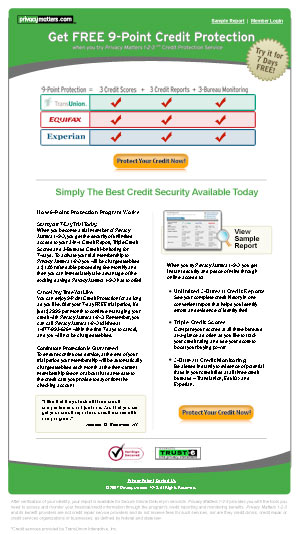Landing Page Optimization: Methodical Buyer Modality
Continuing the series on Landing Page Optimization and Buying Modalities, in Part 4 I’ll talk about the Methodical Buyer Modality and provide tips on marketing to a methodical buyer audience.
In Part 2 and Part 3 of the series, I dug a little bit deeper into the Competitive and Humanistic buying behaviours (respectively). Both humanistic and competitive buyers are the two least prevalent shoppers, while the Methodical Buying Modality is the most prevalent, at about 40-45% of the general population. With this is mind, targeting the methodical buyer may be your best option to at least start your testing, but to truly reach the biggest audience, it is still always smart to test for all buyer modalities (which can also help you learn to know your audience).
The most apparent characteristic of the methodical shopper is that they are comparitive shoppers by nature. This fits in well with the online shopper since there is such an abundance of resources and online shopping sites to choose from on the web. They often know exactly what their problem is (what they are shopping for), but need that extra “push” to tell them why your product is the best fit. While they are eager to solve their problem, they are also very quick to jump to your competitors site before making any decisions. The challenge can often be giving them as much information as possible, but still always driving them through the conversion funnel.
Methodical shoppers are very detail oriented. They want all the information they can get on not only your product, but your business and your processes. They are less likely to take a risk, and need factual details on why your product is the best fit for them. They can often be the easiest shopper to provide what they are looking for, but the most challenging to convert. Methodical shoppers will tend to visit your site or page several times before making the first transaction, but can be loyal if you deliver a positive experience.
Along with the detailed information about what they will get from the transaction, one of the most important messages to provide the Methodical buyer modality is what sets your product above the rest. Whether it is the lowest price, or the longest warranty, or the most popular – anything that can set your product above the others. They respond well to comparison charts and user ratings. Providing factual data will help in driving them through to checkout.
As with the other buying modalities, the Market Sense blog on the appliedmarketing.com website has some great tips on marketing and selling to the Methodical buying modality as follows:
Appeal: Drawn to proof that your product can solve their problem
Website: Provide lots of detailed information that they can easily explore. They want deeper levels of factual information.
Information Needs: Answer questions on what your product does and how it does it
Understand: How your product can solve their problem. They will think and deliberate logically.
Process: Will pace themselves and work through their buying process in an orderly manner. Don’t try to jump process steps.
Time: Will need time to research, evaluate, and come to a decision. Don’t rush them.
Risk: Everything is a trade-off. Allow them to define their risk boundaries.
Decision: Must make a responsible decision, having weighed the consequences.
Below you will see an example of a landing page I put together with the creative team to target the methodical buying behaviour (click to enlarge).
If you’ve been following this series of posts, you can probably guess that this example is for the same product with the same offerings for the competitive and humanistic examples. And you can probably guess, the largest segment of our audience was still the spontaneous buyer behavior, with the challenge being to appeal to the methodical buyer without alienating the spontaneous buyer. You can also see that this example is vastly different from the other examples, with some key elements as follows:
1. A strong visual chart chart demonstrating what the customer receives with the product.
2. A large amount of information copy (compared to the other examples).
3. The use of numbers, which was done purposely. Methodical users tend to respond better to numbers than the other buying behaviors.
4. The “9-Point Credit Protection” messaging. In the credit monitoring market, 3 is often used (for the three credit bureaus), the use of “9” suggests this is better than competitor offers.
5. Use of customer testimonial which supports you can get all this protection in one place.
6. The option to click to view a “sample report”
While there are still other elements that could be added and changed to focus more on the Methodical Buying Modality, I think this is a good example of some elements that can be used to target the methodical buyer. As with the other buying behaviours, it’s important to test into and out of any changes, and to try and learn more about your customer in order to be able to focus and optimize your landing pages to match what they may be looking for.
I hope you found this post helpful, and hope you return for the last post in the series, discussing the spontaneous buying modality.





